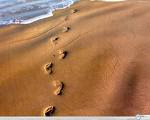Sometimes foot drop is temporary, in other cases, foot drop is permanent. If you have foot drop, you may need to wear a brace on your a
nkle and foot to hold your foot in a normal position.
Symptoms may include: Difficulty lifting the front part of your foot, which is sometimes the only sign of foot drop. (2) dragging your foot on the floor as you walk. (3) Slapping your foot down onto the floor with each step you take. (4) Raising your thigh when you walk, as
if you were climbing stairs. (5) Pain, weakness or numbness in the foot.
Foot drop is caused by weakness or paralysis of the muscles below the knee involved in lifting the front part of the foot. The underlying causes of foot drop are varied. Often, neurological, muscular and anatomical problems overlap.
Treatment for foot drop depends on the underlying cause. If the underlying cause is successfully treated, foot drop may improve or even disappear. If the underlying cause cannot be treated, then it may be permanent.
Bracing or splints that fits into your shoe can help hold your foot in a normal position. Physical therapy including exercises that strengthen your leg muscles and help you maintain the range of motion in your knee and ankle may improve gait problems associated with drop foot. Surgery would involve infusing ankle or foot bones or that transfers tendons to stronger leg muscles may be helpful to improve walking difficulties.
www.vailfoot.com is our website that you can go to look at various braces that would help you if you have drop foot. This is an example of the Exoform ankle brace that helps to support your ankle. It is best to get professional advice as to what kind of brace would be best for you. Give Dr. T. F. Vail's office a call at 419-423-1888 to schedule an appointment if you are bothered by drop foot.




